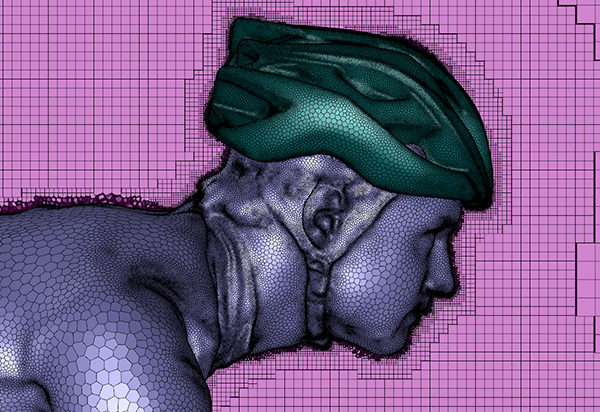 |
|
|
[Sponsors] | |||||
|
|
|
#1 |
|
Senior Member
Join Date: Jan 2018
Posts: 121
Rep Power: 8  |
As you may know, ANSYS has introduced a new type of meshing called mosaic meshing. They claim that this type of meshing is 45% faster, requires 30% less RAM, increases the accuracy and needs much less cells(about 40% less) compared to the other meshing types.
I just wanted to know that is it actually good or its just for advertising? What are the strengths and weaknesses of mosaic meshing?  |
|
|
|

|
|
|
|
|
#2 |
|
Senior Member
Sayan Bhattacharjee
Join Date: Mar 2020
Posts: 495
Rep Power: 8  |
thin boundary layers -> better boundary layer capture.
cubic cells throughout the domain -> fast solution due to simple cell shape, accurate solution due to good cell shape and smooth progression of size of nearby cells. polyhedral cells connecting the boundary layers and cubic cells -> it just connects stuff together. |
|
|
|

|
|
|
|
|
#3 | |
|
Senior Member
Sayan Bhattacharjee
Join Date: Mar 2020
Posts: 495
Rep Power: 8  |
Quote:
One caveat is there. Hexcore meshes generally need to be refined very much to capture a particular region of high gradient (i.e a shockwave, refraction wave etc). In such cases, the number of cells can increase significantly high. NASA has solved this issue, in two ways in the past: i. use a cartesian grid, where the grid is rotated, stretched and aligned with the shockwave. ii. use a spring-analogy adaptation method in tetrahedral grids to make skewed cells that are less in number, but give good performance and accuracy ( https://fun3d.larc.nasa.gov/example-33.html https://fun3d.larc.nasa.gov/example-51.html ) |
||
|
|

|
||
 |
| Tags |
| ansys fluent, meshing |
|
|
 Similar Threads
Similar Threads
|
||||
| Thread | Thread Starter | Forum | Replies | Last Post |
| [ANSYS Meshing] Help about meshing well | berkmm | ANSYS Meshing & Geometry | 1 | May 11, 2020 15:32 |
| Map of this Meshing (sub-)Forum | wyldckat | OpenFOAM Meshing & Mesh Conversion | 0 | April 27, 2019 09:33 |
| [ANSYS Meshing] Parallel meshing utilisation failing | crc1622 | ANSYS Meshing & Geometry | 0 | February 14, 2019 02:42 |
| Looking for some good meshing literature and tutorials | BilalUsmani | Lounge | 2 | July 11, 2017 12:48 |
| [ANSYS Meshing] Migrating from GAMBIT to ANSYS Meshing | David-CFD | ANSYS Meshing & Geometry | 1 | April 1, 2011 05:22 |